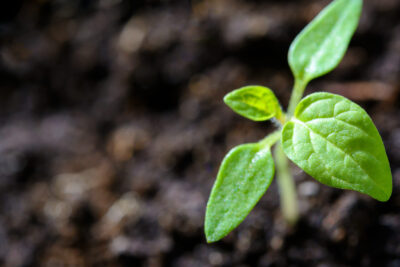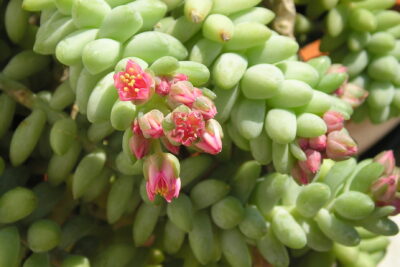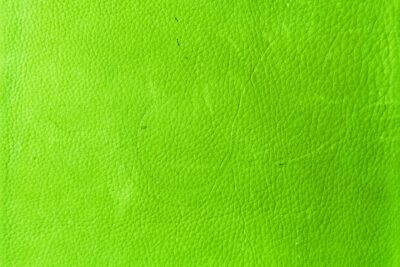
Discover the Enchanting Beauty of Ruffled Succulent Leaves

When it comes to the world of plants, succulents have been a popular choice for many gardening enthusiasts. With their unique ability to store water in their leaves, these plants have become known for their resilience and low maintenance. However, among the vast variety of succulents, there is one particular group that stands out with its captivating beauty - ruffled succulent leaves.
We will delve into the enchanting world of ruffled succulent leaves. We will explore the different types of succulents that have this distinctive feature and learn about their care requirements. Additionally, we will discuss the various ways in which ruffled succulents can be incorporated into your indoor or outdoor garden, bringing a touch of elegance and whimsy to your space. Whether you are a seasoned succulent collector or a beginner gardener, this article will provide you with valuable insights and inspiration to embrace the allure of ruffled succulent leaves.
- Water your succulents sparingly to prevent overwatering and root rot
- Provide your succulents with plenty of sunlight to keep their leaves vibrant and healthy
- Use well-draining soil to ensure proper moisture levels for your succulents
- Avoid excessive fertilization, as succulents generally don't require heavy feeding
- Keep an eye out for pests such as mealybugs and treat them promptly to protect your succulents
- Gently remove any dead or damaged leaves to maintain the overall appearance of your succulents
- Consider grouping different types of succulents together for a visually appealing display
- Experiment with different container options to enhance the aesthetic appeal of your succulents
- Research the specific care requirements of different succulent varieties to ensure their well-being
- Enjoy the unique beauty and resilience of ruffled succulent leaves in your indoor or outdoor spaces
- Frequently Asked Questions
Water your succulents sparingly to prevent overwatering and root rot
One of the most important aspects of caring for succulents is to water them sparingly. Succulents are adapted to survive in arid conditions, so they have the ability to store water in their leaves and stems. Overwatering can lead to root rot and ultimately the death of your succulent.
When it comes to watering your succulents, less is more. It's best to wait until the soil is completely dry before giving them a thorough watering. A good rule of thumb is to stick your finger about an inch into the soil - if it feels dry, it's time to water. Remember, succulents are drought-tolerant plants, so they can go for extended periods without water.
To prevent overwatering, it's crucial to use well-draining soil. Succulents prefer soil that allows water to pass through quickly, preventing excess moisture from sitting around the roots. You can either purchase a special succulent soil mix or create your own by combining regular potting soil with sand or perlite.
When watering your succulents, make sure to water the soil directly rather than spraying the leaves. Succulent leaves are covered in a waxy coating that helps to prevent water loss, but excessive moisture on the leaves can lead to fungal diseases.
Another important factor to consider is the time of year. During the winter months when succulents go into dormancy, they require even less water. Reduce the frequency of watering to once every few weeks or when the soil is completely dry.
 Fast-Growing Succulents: Seed-Grown Varieties Revealed
Fast-Growing Succulents: Seed-Grown Varieties RevealedBy following these watering guidelines, you can ensure that your succulents thrive and maintain their enchanting beauty.
Provide your succulents with plenty of sunlight to keep their leaves vibrant and healthy
When it comes to succulents, one of the most mesmerizing features is the ruffled leaves that adorn these plants. The unique texture and shape of these leaves add a touch of enchantment to any succulent collection. If you're a succulent enthusiast or just starting to explore the world of succulents, it's essential to know how to care for these ruffled beauties.
One crucial factor in maintaining the vibrant and healthy appearance of ruffled succulent leaves is providing them with plenty of sunlight. Succulents thrive in bright, indirect sunlight, so it's crucial to place them in a location where they can receive at least six hours of sunlight per day. You can place them near a window or in a spot with filtered sunlight, ensuring they get the right amount of light without the risk of scorching their delicate leaves.
To optimize the sunlight exposure for your succulents, you can rotate them regularly. This will ensure that all sides of the plant receive an equal amount of light, preventing any direction-specific growth. By providing adequate sunlight, you'll notice that the ruffled leaves will maintain their vibrant colors and continue to grow with a healthy appearance.
Monitor the watering routine for your ruffled succulent leaves
Another crucial aspect of caring for ruffled succulent leaves is to have a proper watering routine. Succulents are known for their ability to store water in their leaves, and overwatering can lead to root rot and other issues. To maintain the health of your succulents, it's essential to water them sparingly and allow the soil to dry out between waterings.
When watering your ruffled succulent, ensure that you water the soil directly and avoid wetting the leaves. Ruffled succulent leaves are more susceptible to rot if they remain wet for an extended period. It's recommended to use a well-draining soil mix specifically designed for succulents to prevent waterlogging.
One effective way to determine when to water your succulents is to observe the leaves. If the leaves appear plump and firm, it indicates that the plant has enough water. However, if the leaves start to appear wrinkled or shriveled, it's a sign that your succulent needs watering. Remember, it's better to underwater than overwater, as succulents are more tolerant of drought than excessive moisture.
 Exploring the Fascinating World of Tree-Like Succulent Plants
Exploring the Fascinating World of Tree-Like Succulent PlantsProtect your ruffled succulent leaves from extreme temperatures
While succulents are known for their resilience and ability to adapt to various conditions, it's important to protect your ruffled succulent leaves from extreme temperatures. These delicate leaves can suffer damage if exposed to frost or scorching heat. It's advisable to keep your succulents indoors during the winter months or provide them with proper insulation if they are placed outdoors.
During the summer, it's essential to shield your succulents from direct sunlight during the hottest parts of the day. You can use a sheer curtain or move them to a partially shaded area to prevent sunburn and leaf damage. By creating a suitable environment with moderate temperatures, you'll ensure that your ruffled succulent leaves remain healthy and vibrant throughout the year.
By providing your ruffled succulent leaves with plenty of sunlight, monitoring their watering routine, and protecting them from extreme temperatures, you'll be able to enjoy the enchanting beauty of these unique succulent leaves for years to come. Incorporating these care tips into your succulent routine will help them thrive and add a touch of magic to your indoor or outdoor space.
Use well-draining soil to ensure proper moisture levels for your succulents
When it comes to growing succulents, one of the key factors to consider is the type of soil you use. Succulents thrive in well-draining soil, which allows excess water to flow out easily and prevents the roots from becoming waterlogged.
Using the right soil mix not only ensures proper moisture levels but also helps prevent root rot and other soil-related issues. When it comes to succulents with ruffled leaves, such as Echeveria and Graptopetalum, using well-draining soil is even more crucial to maintain their enchanting beauty.
Here are a few important points to keep in mind when choosing soil for your ruffled succulent leaves:
 Spiky Succulents: A Guide to Thorny and Spiky Types
Spiky Succulents: A Guide to Thorny and Spiky Types1. Opt for a sandy or gritty soil mix
The ideal soil mix for ruffled succulents should be well-draining and have a sandy or gritty texture. This allows water to quickly pass through and prevents water from pooling around the roots. You can either purchase pre-made succulent soil or create your own mix by combining regular potting soil with perlite or coarse sand.
2. Consider adding organic matter
While succulents generally prefer a lean soil mix, adding a small amount of organic matter can provide some nutrients and improve water retention. You can incorporate a small portion of well-rotted compost or coconut coir to enhance the soil's ability to retain moisture without becoming overly compacted.
3. Ensure proper drainage
Drainage holes in your pots or containers are essential for ruffled succulent leaves. These holes allow excess water to escape, preventing the soil from becoming waterlogged. If your favorite decorative pot doesn't have drainage holes, consider using a nursery pot with drainage and placing it inside the decorative one.
4. Avoid overwatering
Overwatering is one of the most common mistakes people make when caring for succulents. Ruffled succulent leaves are particularly sensitive to excess moisture, which can lead to rotting and a loss of their beautiful texture. Remember to allow the soil to dry out completely between waterings and adjust the watering frequency based on the season and environmental conditions.
5. Provide adequate sunlight
Succulents with ruffled leaves thrive in bright, indirect sunlight. Place them in a spot where they can receive at least six hours of sunlight per day. However, be cautious of exposing them to intense, direct sunlight for prolonged periods, as it can scorch their delicate leaves.
By using well-draining soil, ensuring proper drainage, and providing adequate sunlight, you can help your ruffled succulent leaves maintain their enchanting beauty. Remember to water them sparingly and take extra care during the winter months when succulents tend to go dormant.
Avoid excessive fertilization, as succulents generally don't require heavy feeding
 Vibrant Blooming Outdoor Succulents: Discover Stunning Plants
Vibrant Blooming Outdoor Succulents: Discover Stunning PlantsWhen it comes to caring for succulents, it's important to remember that less is often more. These resilient plants have adapted to survive in arid conditions, making them well-suited for low-maintenance environments. One aspect of succulent care that often gets overlooked is fertilization.
Succulents are not heavy feeders, meaning they don't require excessive amounts of fertilizer to thrive. In fact, too much fertilizer can actually be detrimental to their health. Excessive fertilization can lead to overgrowth and weak, leggy stems, detracting from the natural beauty of their ruffled leaves.
To avoid this, it's best to follow a minimalistic approach when it comes to fertilizing your succulents. A general rule of thumb is to fertilize only during the growing season, which is typically spring and summer. During this time, you can use a balanced, water-soluble fertilizer diluted to half strength. Applying this diluted solution once every two to four weeks should provide adequate nutrients without overwhelming the plants.
When choosing a fertilizer, opt for one specifically formulated for succulents or cacti. These fertilizers typically have a lower nitrogen content, as succulents prefer a more balanced nutrient profile. Additionally, it's important to dilute the fertilizer properly, as succulents are sensitive to concentrated solutions.
Remember, while fertilizers can provide a boost to your succulents' growth, it's essential to strike a balance. Over-fertilizing can lead to excessive leaf growth, which may result in ruffled leaves losing their distinctive shape and texture. By embracing a less is more mindset when it comes to fertilization, you can ensure that the enchanting beauty of ruffled succulent leaves remains intact.
Keep an eye out for pests such as mealybugs and treat them promptly to protect your succulents
When it comes to maintaining the enchanting beauty of ruffled succulent leaves, one of the key challenges is dealing with pests. Mealybugs, in particular, can wreak havoc on these delicate plants if left untreated. These tiny pests are coated in a white, cotton-like substance and can be found clustered on the leaves and stems of succulents.
 Discover the Perfect Buddha Temple Succulent for Your Home
Discover the Perfect Buddha Temple Succulent for Your HomeFortunately, there are effective ways to combat mealybugs and safeguard your succulents. The first step is to regularly inspect your plants for signs of infestation. Look out for the white, fuzzy clusters on the leaves, as well as sticky residue on the foliage. If you spot any of these indicators, it's crucial to take action promptly.
Here are some tips to treat mealybugs on your succulents:
- Isolate the affected plants: To prevent the infestation from spreading, it's essential to isolate the affected succulents from your other plants. This will help contain the problem and protect the overall health of your garden.
- Remove mealybugs manually: Using a pair of tweezers or a cotton swab dipped in rubbing alcohol, carefully remove the mealybugs from your succulent leaves. Be sure to dispose of them properly to avoid reinfestation.
- Wash the leaves: Gently wash the leaves of your succulents with a mild soap solution to eliminate any remaining mealybugs or their eggs. Rinse thoroughly to remove any soap residue.
- Apply neem oil: Neem oil is a natural insecticide that can effectively control mealybugs. Dilute the neem oil according to the instructions on the packaging and spray it on the affected areas of your succulents. This will help eliminate the pests and prevent future infestations.
- Maintain proper care: After treating your succulents for mealybugs, it's important to continue providing them with optimal care. This includes ensuring they receive adequate sunlight, watering them correctly, and using well-draining soil. Healthy succulents are more resistant to pests and diseases.
By following these steps and keeping a watchful eye on your succulents, you can effectively combat mealybugs and protect the enchanting beauty of their ruffled leaves. Remember, early detection and prompt action are key to maintaining the health and vitality of your succulent collection.
Gently remove any dead or damaged leaves to maintain the overall appearance of your succulents
When it comes to caring for your succulents, one of the essential tasks is to regularly remove any dead or damaged leaves. This not only helps to maintain the aesthetic appeal of your plants but also promotes their overall health and growth.
Dead or damaged leaves can not only be unsightly but can also attract pests or harbor diseases. By removing these leaves, you are not only preventing any potential problems but also allowing your succulents to redirect their energy towards new growth.
To remove dead or damaged leaves, simply hold the base of the leaf close to the stem and gently tug it away. Be careful not to damage the healthy leaves or the stem. If the leaf doesn't come off easily, avoid forcing it as this may cause harm to the plant.
 Best Pink Flowering Ground Cover Succulents for Your Garden
Best Pink Flowering Ground Cover Succulents for Your GardenAdditionally, you can use a pair of clean, sharp scissors or pruning shears to carefully trim off any damaged parts of the leaves. This method is particularly useful when dealing with larger succulents or those with thick leaves.
Remember to always sanitize your tools before and after use to prevent the spread of any potential diseases. You can do this by wiping them with rubbing alcohol or using a diluted bleach solution.
Regularly removing dead or damaged leaves not only keeps your succulents looking their best but also allows for better air circulation and prevents the accumulation of debris, which can attract pests or lead to fungal infections.
By taking the time to gently remove any dead or damaged leaves, you are ensuring that your succulents remain healthy, vibrant, and visually stunning.
Consider grouping different types of succulents together for a visually appealing display
Succulents are known for their unique and captivating beauty, but did you know that some varieties have leaves that are ruffled? These ruffled succulent leaves add an enchanting touch to any garden or indoor space, making them a must-have for plant enthusiasts.
One way to showcase the mesmerizing beauty of ruffled succulent leaves is by grouping different types together. By combining succulents with varying leaf shapes, colors, and textures, you can create a visually appealing display that will catch everyone's attention.
 10 Unique Indoor Succulents That Resemble Hair for a Whimsical Touch
10 Unique Indoor Succulents That Resemble Hair for a Whimsical TouchWhen selecting succulents for your grouping, consider choosing varieties with leaves that complement each other. For example, you could pair a succulent with large, wavy ruffled leaves with another variety that has small, delicate ruffled leaves. This contrast in leaf size and texture will create a visually interesting and dynamic arrangement.
Furthermore, you can play with colors to enhance the overall aesthetic of your succulent grouping. For instance, pairing succulents with vibrant green ruffled leaves alongside those with deep purple or silvery-gray ruffled leaves will create a striking color contrast.
To create a cohesive look, consider using containers or pots of different shapes and sizes. This will add further visual interest to your succulent grouping, allowing each plant to stand out while still being part of the overall composition.
Benefits of grouping succulents
Grouping succulents not only enhances their visual appeal but also provides several practical benefits. One advantage is that succulents grouped together can create a microclimate that helps retain moisture. As succulents are known for their ability to store water in their leaves, clustering them together can create a more humid environment, reducing water loss and promoting healthier growth.
Additionally, when succulents are grouped, they can provide natural shade and protection for each other. This can be particularly beneficial if you live in an area with intense sun exposure or extreme temperatures. The clustered succulents can act as a natural barrier, shielding each other from harsh weather conditions and preventing sunburn or heat stress.
Tips for maintaining a succulent grouping
To ensure the longevity and vitality of your succulent grouping, it's important to provide them with proper care. Here are some essential tips:
- Light: Most succulents thrive in bright, indirect light. Place your succulent grouping in a location where they can receive a few hours of sunlight each day, but avoid exposing them to direct, intense sunlight.
- Watering: Succulents have low water needs and are prone to root rot if overwatered. Allow the soil to dry out completely between waterings, and ensure proper drainage to prevent standing water.
- Soil: Use a well-draining soil mix specifically formulated for succulents. A mix that contains perlite, pumice, or sand will help prevent waterlogged roots.
- Temperature: Most succulents prefer moderate temperatures between 60-80°F (15-27°C). Protect them from extreme cold or heat, as it can cause damage to the leaves and overall health of the plants.
By following these tips and creatively grouping your ruffled succulents, you can create a stunning display that will captivate both you and your guests. Embrace the enchanting beauty of ruffled succulent leaves and let your creativity flourish!
 Top 10 Tall Succulent Plants: Perfect for Indoor or Outdoor Use
Top 10 Tall Succulent Plants: Perfect for Indoor or Outdoor UseExperiment with different container options to enhance the aesthetic appeal of your succulents
If you are a succulent enthusiast, you are probably aware of the diverse range of shapes and sizes that succulent leaves come in. From smooth and glossy to spiky and textured, succulents offer a fascinating array of leaf varieties that can add a unique touch to any space. One such captivating leaf type is the ruffled succulent leaf.
Ruffled succulent leaves are characterized by their undulating edges, which create a delightful and whimsical effect. These leaves often have a wavy or crinkled appearance, resembling the ruffles of a frilly dress. The ruffled texture adds an enchanting beauty to the overall look of the succulent, making it a sought-after choice for succulent enthusiasts and collectors.
Why Choose Ruffled Succulent Leaves?
One of the main reasons why succulent lovers are drawn to ruffled leaves is their unique aesthetic appeal. The ruffled edges create an interesting visual texture, adding depth and dimension to the plant. Whether you choose a single ruffled succulent as a centerpiece or incorporate them into an arrangement, they are sure to catch the eye and spark conversation.
Furthermore, ruffled succulent leaves can provide an element of surprise and contrast when paired with other succulent varieties. The combination of smooth and ruffled leaves adds visual interest and creates a stunning display that is bound to impress.
Enhancing the Beauty of Ruffled Succulents with Different Containers
While ruffled succulent leaves are captivating on their own, choosing the right container can further enhance their beauty. Here are a few container options to consider:
- Textured Ceramic Pots: Pairing ruffled succulents with textured ceramic pots can create a visually appealing contrast. The rough texture of the pot complements the delicate ruffled leaves, adding an intriguing visual element to your succulent display.
- Crystalline Glass Terrariums: Placing ruffled succulents in crystalline glass terrariums can create a mesmerizing effect. The transparency of the glass allows for a full view of the intricate ruffled leaves, while the terrarium's geometric design adds a modern and sophisticated touch.
- Hanging Baskets: Ruffled succulents can look stunning when suspended in hanging baskets. The cascading leaves create a sense of movement and grace, transforming any space into a botanical oasis. Opt for baskets made of natural materials like rattan or macramé for a bohemian-inspired look.
By experimenting with different container options, you can elevate the aesthetic appeal of your ruffled succulents and create a visually captivating display that showcases their enchanting beauty.
Research the specific care requirements of different succulent varieties to ensure their well-being
 Exploring Fred Ives: A Specialist in Succulent Cultivation
Exploring Fred Ives: A Specialist in Succulent CultivationWhy it's important to research the care requirements of different succulent varieties
When it comes to succulents, not all plants are created equal. Each succulent species has its own unique care requirements and neglecting to understand these needs can lead to poor health or even the death of your beloved plants. To ensure the well-being and longevity of your succulents, it is crucial to do your research and learn about the specific care requirements of the different varieties you own.
The significance of providing proper care for ruffled succulent leaves
One particular group of succulents that has gained popularity in recent years is those with ruffled leaves. These mesmerizing plants display intricate patterns and textures that add a touch of enchantment to any space. However, ruffled succulent leaves tend to require a bit more attention and care compared to their smoother counterparts.
Understanding the unique needs of ruffled succulent leaves
Before diving into the care routine for ruffled succulents, it's important to understand why they require special attention. The ruffled leaves of these succulents often have more surface area compared to other varieties, making them prone to moisture loss. Additionally, the intricate folds and crevices in their leaves can trap water, leading to rot if not properly addressed.
Essential care tips for maintaining the health of ruffled succulent leaves
To keep your ruffled succulents thriving, consider the following care tips:
- Provide adequate sunlight: Ruffled succulents generally thrive in bright, indirect sunlight. Place them near a window with filtered light or provide them with a few hours of morning sun.
- Water sparingly: Due to their increased risk of moisture loss, ruffled succulents should be watered less frequently than other succulent varieties. Allow the soil to dry out between watering sessions and avoid overwatering.
- Use well-draining soil: Ruffled succulents prefer a well-draining soil mixture that allows excess water to flow through. Incorporate perlite or sand into the potting mix to enhance drainage.
- Avoid water accumulation: Be cautious not to overwater your ruffled succulents, as the trapped water in their crevices can lead to rot. Water at the base of the plant and ensure that excess moisture doesn't accumulate in the folds of the leaves.
- Monitor temperature and humidity: Ruffled succulents generally thrive in temperatures between 60-80°F (15-27°C). Avoid exposing them to extreme temperature fluctuations or high humidity levels.
By following these care tips, you can enjoy the enchanting beauty of ruffled succulent leaves and ensure their long-lasting health. Remember, each succulent variety is unique, so take the time to research and understand the specific needs of your plants.
Enjoy the unique beauty and resilience of ruffled succulent leaves in your indoor or outdoor spaces
Succulents are known for their unique and captivating beauty, but ruffled succulent leaves take it to a whole new level. These stunning plants boast leaves that are intricately textured, with delicate ruffles that add a touch of elegance to any space. Whether you are a seasoned gardener or a newbie plant enthusiast, ruffled succulents are a must-have addition to your collection.
 Top Succulents with White Hair: A Guide to the Best Varieties
Top Succulents with White Hair: A Guide to the Best VarietiesWhy Choose Ruffled Succulents?
Ruffled succulents, also known as crinkle-leaf succulents, offer a visual treat for plant lovers. Their leaves have a distinct texture that resembles ruffles, giving them a whimsical and enchanting appearance. These unique features set them apart from other succulents, making them a popular choice among gardeners and interior decorators alike.
Not only do ruffled succulents stand out aesthetically, but they are also incredibly resilient. Like other succulents, they have thick, fleshy leaves that store water, allowing them to survive in arid environments with minimal care. This makes them perfect for busy individuals or those who may not have a green thumb but still want to enjoy the beauty of plants.
Types of Ruffled Succulents
Ruffled succulents come in a wide variety of shapes, sizes, and colors, offering endless possibilities for plant enthusiasts. Here are some popular types of ruffled succulents:
- Echeveria 'Perle von Nurnberg': This popular succulent features pastel-colored leaves with a distinct ruffled edge. Its rosette shape adds a touch of elegance to any arrangement.
- Kalanchoe 'Mother of Thousands': With its cascading ruffled leaves, this succulent provides a dramatic and eye-catching display. It is known for producing tiny plantlets along the edges of its leaves, creating a unique visual effect.
- Sempervivum 'Red Rubin': This striking succulent has deep red ruffled leaves that intensify in color during the cooler months. Its compact size makes it ideal for small gardens or containers.
These are just a few examples of the wide range of ruffled succulents available. Each type has its own unique characteristics, allowing you to create stunning arrangements and displays that showcase their enchanting beauty.
Care Tips for Ruffled Succulents
While ruffled succulents are relatively low-maintenance, a few care tips can help them thrive in your indoor or outdoor spaces:
- Light: Ruffled succulents generally prefer bright, indirect light. Place them near a window where they can receive a few hours of sunlight each day.
- Watering: Like other succulents, ruffled varieties have water-storing leaves and are prone to root rot if overwatered. Allow the soil to dry out completely between waterings and avoid leaving them in standing water.
- Temperature: Most ruffled succulents prefer temperatures between 60-80°F (15-27°C). Protect them from extreme heat or cold, as it can damage their leaves.
- Soil: Use a well-draining soil mix specifically formulated for succulents to ensure proper water drainage and prevent root rot.
By following these care tips, you can ensure that your ruffled succulents remain healthy and continue to display their stunning ruffled leaves.
Ruffled succulents are a delightful addition to any plant collection. Their unique beauty, resilience, and low-maintenance nature make them a perfect choice for both experienced gardeners and beginners. So why not bring some enchantment into your indoor or outdoor spaces with these captivating plants?
Frequently Asked Questions
1. What are ruffled succulent leaves?
Ruffled succulent leaves are a type of succulent plant that have leaves with wavy or crinkled edges, giving them a ruffled appearance.
2. Are ruffled succulent leaves common?
No, ruffled succulent leaves are not as common as other types of succulent leaves. They are more unique and sought after by plant enthusiasts.
3. How do ruffled succulent leaves develop?
Ruffled succulent leaves develop their distinctive texture due to genetic factors and environmental conditions. The genetic makeup of the plant determines the leaf shape, while environmental factors such as sunlight and water can influence the degree of ruffling.
4. How do I care for ruffled succulent leaves?
Ruffled succulent leaves require similar care to other succulents. They prefer well-draining soil, bright light, and infrequent watering. It's important not to overwater them, as this can lead to root rot. Additionally, they can benefit from occasional fertilization during the growing season.
If you want to read more articles similar to Discover the Enchanting Beauty of Ruffled Succulent Leaves, you can visit the Varieties and Colors category.






You Must Read